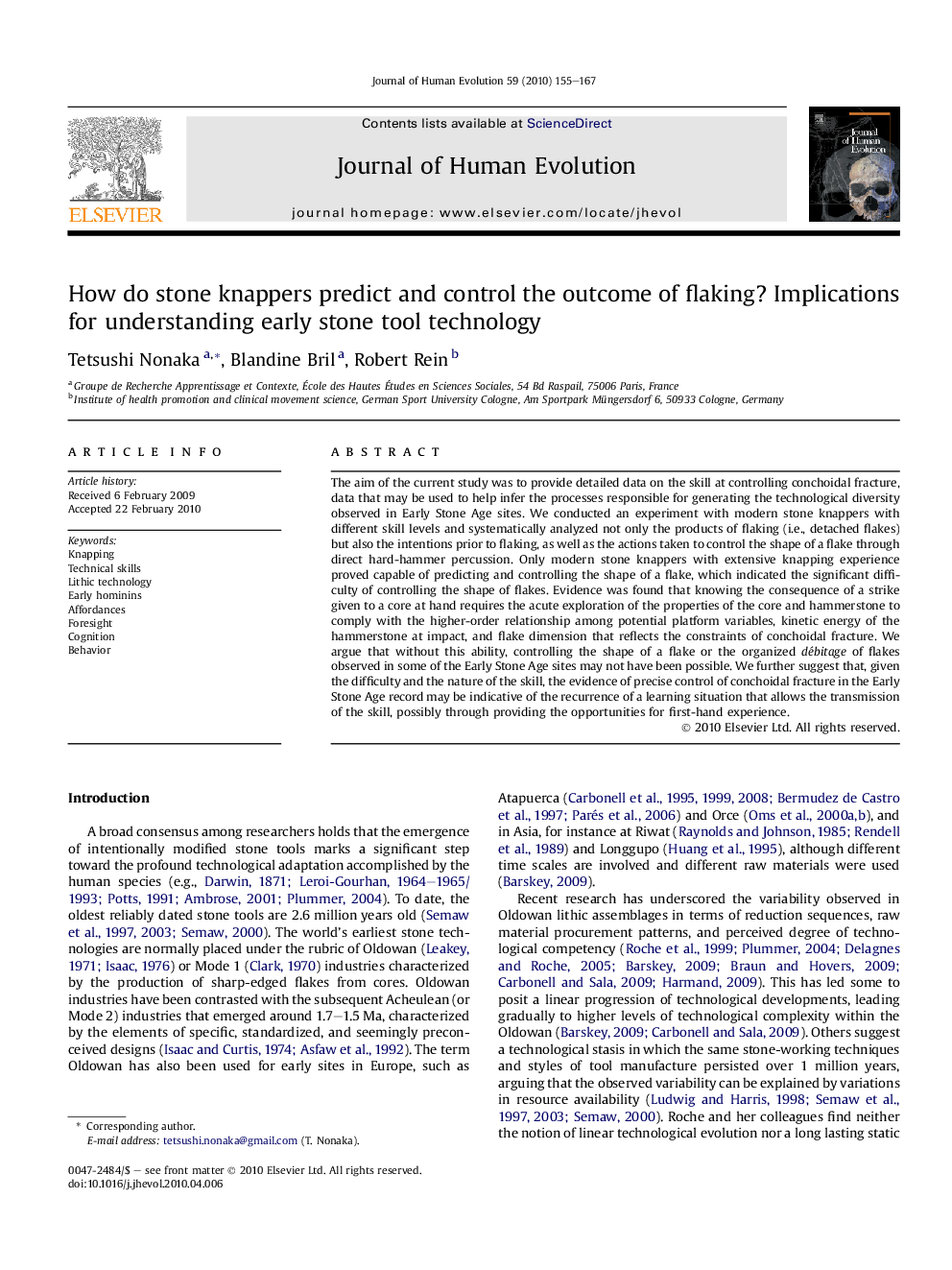| کد مقاله | کد نشریه | سال انتشار | مقاله انگلیسی | نسخه تمام متن |
|---|---|---|---|---|
| 4556692 | 1329497 | 2010 | 13 صفحه PDF | دانلود رایگان |

The aim of the current study was to provide detailed data on the skill at controlling conchoidal fracture, data that may be used to help infer the processes responsible for generating the technological diversity observed in Early Stone Age sites. We conducted an experiment with modern stone knappers with different skill levels and systematically analyzed not only the products of flaking (i.e., detached flakes) but also the intentions prior to flaking, as well as the actions taken to control the shape of a flake through direct hard-hammer percussion. Only modern stone knappers with extensive knapping experience proved capable of predicting and controlling the shape of a flake, which indicated the significant difficulty of controlling the shape of flakes. Evidence was found that knowing the consequence of a strike given to a core at hand requires the acute exploration of the properties of the core and hammerstone to comply with the higher-order relationship among potential platform variables, kinetic energy of the hammerstone at impact, and flake dimension that reflects the constraints of conchoidal fracture. We argue that without this ability, controlling the shape of a flake or the organized débitage of flakes observed in some of the Early Stone Age sites may not have been possible. We further suggest that, given the difficulty and the nature of the skill, the evidence of precise control of conchoidal fracture in the Early Stone Age record may be indicative of the recurrence of a learning situation that allows the transmission of the skill, possibly through providing the opportunities for first-hand experience.
Journal: Journal of Human Evolution - Volume 59, Issue 2, August 2010, Pages 155–167